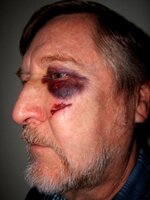PaulSF
Member
My first time turning PR, the Merlin's Magic from Exotic Blanks. I just know it will be beautiful, if only I could refrain from tearing it to pieces. And it's taking FOREVER. Any tips? I know sharp tools, but should I be taking my tool to the bench grinder every 2 minutes? Maybe I need something that will stay sharper longer. Any recommendations there?

